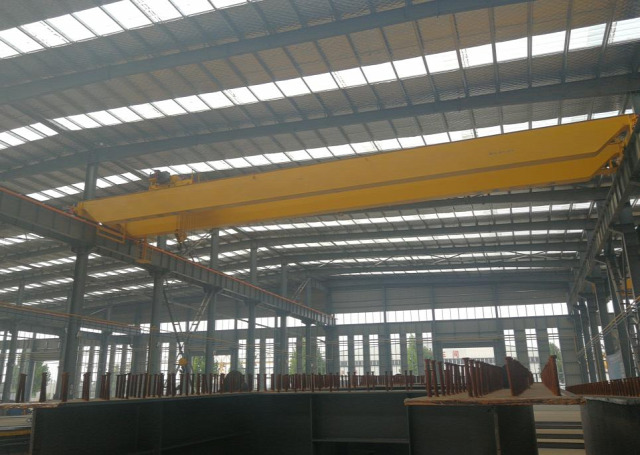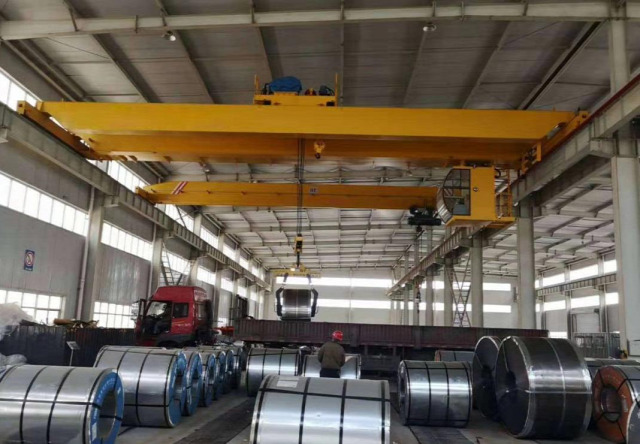When purchasing a bridge crane, companies often focus on technical specifications, such as load capacity, span, and lifting height. However, a crucial factor that often goes unnoticed is how local regulations and industry standards impact the overall cost of a bridge crane system. These regulations and standards can vary from country to country or even from one region to another, influencing not only the design and manufacturing process but also installation and maintenance costs. This article explores the various ways in which local regulations and standards affect the cost of bridge cranes, providing insights into compliance requirements and strategies for managing these costs effectively.

Understanding Local Regulations and Standards
Local regulations and standards refer to the specific legal requirements, safety codes, and industry norms that govern the design, construction, installation, and operation of equipment like bridge cranes. These regulations are put in place to ensure that cranes are safe to use, environmentally friendly, and capable of meeting the operational needs of various industries. Adherence to these standards is not optional, and failure to comply can result in penalties, legal action, or even suspension of operations.
Safety Standards and Certification
One of the most important aspects of local regulations for bridge cranes is safety. Depending on the country or region, safety standards for overhead lifting equipment will differ. For instance, in Europe, cranes are often required to comply with the European Union’s Machinery Directive (2006/42/EC) and EN 15011, the European standard for overhead travelling cranes. In the United States, the Occupational Safety and Health Administration (OSHA) sets guidelines for crane safety, as outlined in the OSHA 1910.179 standard.
Meeting these standards typically requires extensive testing and certification processes, including load testing, inspection, and documentation of the crane’s design and operation. The cost of these processes can add to the overall expense of the crane, as the manufacturer may need to use specialized testing facilities and staff to meet these local requirements.
Environmental Regulations
Environmental standards also play a critical role in determining the bridge crane cost. Many regions have strict environmental regulations concerning the emission of pollutants, noise levels, and energy efficiency. For example, in countries with stringent environmental laws, such as Germany or Japan, crane manufacturers may need to design systems that minimize energy consumption and noise pollution.
Energy-efficient motors, low-emission hydraulic systems, and noise-reducing features often come at a higher initial cost but are necessary to meet local regulations. These additional features, while contributing to long-term operational savings, increase the upfront investment required for the crane.
Design and Engineering Considerations
Local Adaptation for Compliance
In many cases, local regulations require that bridge cranes be designed or modified to suit specific environmental conditions or industry needs. For example, a bridge crane operating in a region prone to seismic activity may need to be reinforced to withstand earthquakes. In contrast, cranes used in hazardous environments, such as chemical plants or offshore facilities, must adhere to explosion-proof standards.
These requirements often lead to additional design costs. Engineers need to account for factors like seismic loads, corrosion protection, and the ability to withstand extreme weather conditions. For example, an offshore crane designed to operate in corrosive marine environments may need to be constructed with special coatings and materials, adding to both the material and labor costs.

Customization Costs
Local standards can also dictate the need for crane customization. For example, a customer in a high-wind zone might need a crane with a higher wind load rating, or a factory in a region with strict noise regulations may require sound-dampening components. Customizations for specific needs lead to higher engineering costs, which are reflected in the final price of the crane.
Installation and Commissioning Costs
Site-Specific Requirements
The installation of a bridge crane must often comply with site-specific regulations. These requirements can vary depending on factors such as:
- Site conditions: Cranes must be installed on foundations that meet local regulations for stability, including considerations for soil type, load-bearing capacity, and seismic risks.
- Height restrictions: Certain regions may have restrictions on the height of structures, which could influence crane design. For example, in urban areas with limited space, overhead clearance and crane height could be subject to local zoning laws.
- Electrical and wiring codes: Electrical installations for cranes are subject to local building and electrical codes. Compliance with these codes might require more complex wiring systems, particularly in regions where safety standards for electrical work are stringent.
In such cases, the installation team will need to adapt the crane to meet these conditions, and this could involve additional costs for foundation modifications, electrical work, and regulatory documentation. The more complex the installation requirements, the higher the overall project cost.
Permit Fees and Inspection Costs
In addition to design and installation, local regulations often require crane permits and inspections. The cost of obtaining the necessary permits can vary significantly by location, with some regions requiring multiple inspections during the installation phase to ensure compliance with local laws.
For instance, in some countries, crane operators must be certified to operate heavy machinery, which could add to training costs and downtime during the commissioning process. Furthermore, cranes may need to undergo regular safety inspections as part of their ongoing compliance with local regulations, which can also increase the long-term operational costs.
Ongoing Maintenance and Compliance
Periodic Inspections and Certifications
Ongoing maintenance is another area where local regulations impact crane costs. Many countries mandate that cranes undergo periodic safety inspections and receive certifications to remain in operation. In the United States, for example, bridge cranes are subject to OSHA's inspection requirements, which mandate regular checks for wear and tear, load testing, and safety feature validation.
In regions with stricter safety or environmental regulations, the frequency of these inspections may be higher, and more thorough checks may be required. This can result in higher maintenance costs for the crane owner, as well as downtime for inspections and repairs.
Spare Parts and Upgrades
Meeting local regulations may also require that certain components of the crane be upgraded or replaced periodically. For example, a crane might need to be retrofitted with newer safety devices or environmentally friendly technologies to maintain compliance with changing standards. These upgrades can add to the operational costs of the crane over time.
Conclusion
Local regulations and standards play a critical role in determining the overall cost of a bridge crane. From safety and environmental requirements to site-specific considerations and ongoing maintenance, these regulations affect the initial purchase price as well as the long-term operational expenses. While adhering to these regulations ensures that cranes are safe and efficient, it also means that crane owners and operators need to plan for the added costs associated with compliance.
When considering a bridge crane purchase, it is essential for companies to work closely with bridge crane manufacturers and regulatory bodies to fully understand the local requirements and their financial implications. By factoring these costs into the decision-making process, businesses can make informed choices and ensure that their crane systems operate safely, efficiently, and in compliance with all relevant regulations.

